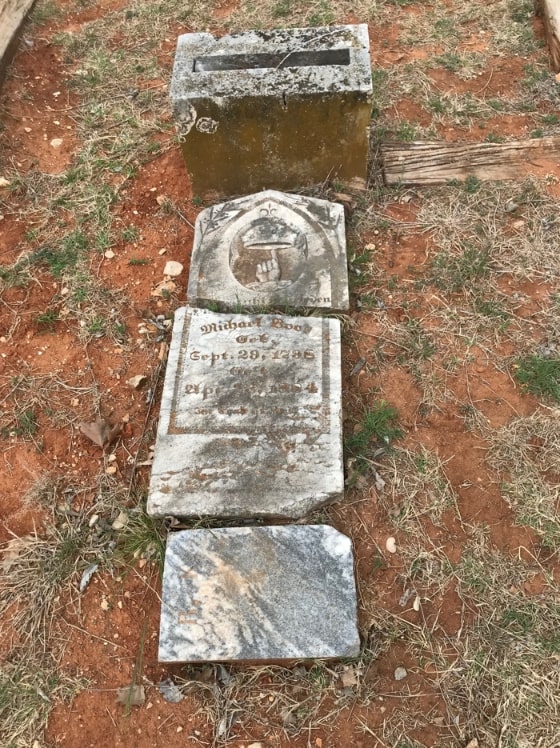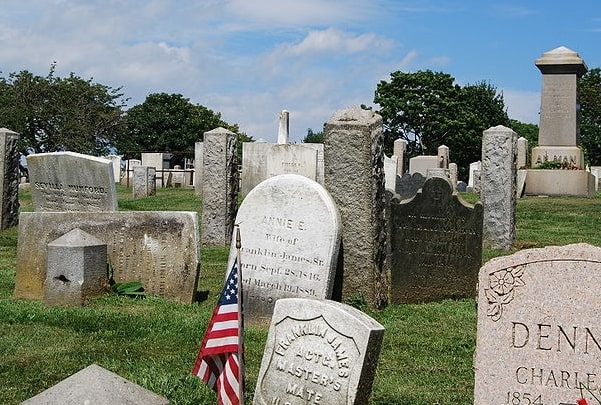Introduction: In this article, Gena Philibert-Ortega gives search tips and possible reasons for why you can’t find your ancestor’s grave. Gena is a genealogist and author of the book “From the Family Kitchen.”
When we start researching an ancestor, we start with the end. In genealogy, we start with the latest event and work backward in time. The latest event, death, we assume should be in a local cemetery in a marked grave, leaving behind records including obituaries and death certificates. But in the case of the cemetery and grave marker, it’s possible that nothing may be found. There are various reasons why you may not find an ancestor’s grave. The following three are just a few reasons to consider as you research.

#1: Not All Cemeteries Include Everyone
One resource you may consult when searching for an ancestor’s burial is a transcription or index of the local cemetery, either online or in print. When the ancestor’s name doesn’t appear in a burial list you might assume they were buried far away from home, not in the local cemetery. That’s a possibility but it’s also important to keep in mind the history of that cemetery and the types of cemeteries in that area.
Some cemeteries are for specific groups. For example, a National Cemetery is for veterans and their dependents, spouses and underage children. There could be an exception to this rule, such as one I went to that started out as a family cemetery before it evolved to be a military cemetery, but in general you will only find veterans and their dependent family members in military cemeteries.
Historically cemeteries were exclusionary and segregated. Cemeteries reflect what was happening in the “living” world at the time. Ethnic and racial groups were not always buried with whites, for example. If they were buried in the same cemetery, they may have been placed in a segregated area of the cemetery. That’s why there can be several cemeteries in an area, some that were specifically for racial or ethnic groups such as African Americans or the Chinese.
Here’s an article about the century-old Auburn Chinese Cemetery.
Because history matters, make sure to research what cemeteries existed in that area during the time of your ancestor’s death. Local histories and historical newspaper articles can help with that.
#2: Not Everyone Is Buried
There are circumstances where someone is not buried. A more present-day example is those who are cremated and their ashes scattered in a forest or ocean. There may be no extant records documenting this. It might just be something the family knows or remembers.
Cremation is not just a recent phenomenon. The first cremation in the United States was in 1876. By 1887, Lancaster, Pennsylvania; Cincinnati, Ohio; Los Angeles, California; Buffalo, New York; and Detroit, Michigan, had crematories. You can read more about this history in my GenealogyBank Blog article on the topic: Was Your Ancestor Buried? A Short History of Cremation.
Other than cremation, a person may not be buried due to the circumstances of their death. For example, when I was researching my book Cemeteries of the Eastern Sierra, I came across a newspaper article about a German immigrant couple, Conrad and Anna Rettenbacher, who settled in California in the 1930s.
They went missing while on a hike in the Mammoth Lake area in August 1934 with their hiking club. During the rescue effort their bodies were found 600 feet down a mountain. Because of the dangerous conditions, the decision was made to bury their bodies where they were found.*
The Rettenbacher’s situation is an example of what happens with those whose deaths make the body unretrievable, including hiking, swimming, military battles (such as the sinking of a ship in the ocean), and other similar incidents. Knowing the circumstances around an ancestor’s death can make it easier to determine where and if they were buried in a traditional cemetery.
#3: Not Everyone Has a Grave Marker (or One That Is Readable)
Finally, let’s consider why not everyone has a grave marker. While we expect to find our ancestors buried in a cemetery with a readable grave marker, this is not always the case. There are a few reasons for this, including:
- The family had no money for a marker.
- The marker was stolen.
- The marker has become illegible over time.
- The marker is broken or destroyed.
- The grave was marked with a temporary funeral home marker that has since disappeared.
- The person’s name was unknown at the time of their death.
- The person was unclaimed and buried with others who were impoverished or unclaimed in a mass grave.
- The person was institutionalized and buried with a number and not a name. Or they were buried without a marker.
Judging from this list you can see there are many reasons why someone may not have a readable grave marker, or a grave marker at all.
Over time, even marked graves can be illegible, stolen, or destroyed. If the cemetery is abandoned, then the details of their burial may be lost altogether.
If the person or their family was impoverished, they may not have a grave marker. They may have been buried in a potter’s field with little to no identification. If they died in an area where no one knew their identify, they may have been buried with others who were unclaimed in a mass grave. Once again, considering the situation around the person’s death and the histories of the local cemeteries can help.
Not Everyone Can Find Their Ancestor’s Grave
It’s just a fact of research. Not all ancestor’s final resting places can be found. Efforts to find them should include death certificates (depending on time and place), articles in historical newspapers, and local histories. Even with exhaustive research, you may not be able to find a place to visit and document the deceased ancestor. Make sure to record what you do know about the death and the possible reasons why they are without a grave or a marked grave.
* Philibert-Ortega, Gena. “Cemeteries of the Eastern Sierra. Arcadia,” 2007, p. 87.
Explore over 330 years of newspapers and historical records in GenealogyBank. Discover your family story! Start a 7-Day Free Trial
Note on the header image: Common Burying Ground and Island Cemetery in Newport, Rhode Island. Credit: Matt H. Wade; Wikimedia Commons.
Related Articles:
- It’s Not All Online: Cemetery Research
- Genealogy Tips: Lessons Learned from Writing a Cemetery Book
- Genealogy Tip: What Does a Gravestone Tell Us?
- Genealogy Tip: What a Gravestone Tells Us – Grave Markers
- Genealogy Tip: How Accurate Is That Gravestone?
- Cemetery Language: A Glossary for Genealogists
- Genealogy Tip: White Bronze Markers at Cemeteries
- Genealogy Tip: Gravestone Porcelain Photos
- Cemetery Etiquette for Genealogists
